12 Military Watch Features That Are Now Standard Issue for Civilians

In an era in which the mechanical wristwatch is, in essence, a piece of obsolete technology whose prolonged ubiquity is the product of an incredibly well-oiled marketing machine, it’s easy to forget that for much of the 20th century, watches were pieces of essential kit.
Take a look at the recommended pieces of equipment required of a First World War-era officer, and “luminous wristwatch” is right up there with “revolver.” And speaking of officers, it should come as little surprise that many of the common features on the contemporary wristwatch have their origins on the battlefield, or from experience gained in the military. Even the wristwatch itself, as you’ll soon read, was once reserved for use by ladies, men having been expected to carry a pocket watch.
More from Robb Report
TAG Heuer and Porsche Just Dropped a New Carrera Chronograph
Big-Wave Surfers Kai Lenny and Maya Gabeira on Why They Actually Wear Dive Watches in the Water
This Unpolished, One-Owner 1978 Patek Philippe Nautilus Blew Our Minds
Perhaps after perusing these common mil-spec features, you’ll look down upon the instrument on your wrist with more respect, more curiosity, more wonder. After all, if not for 20th-century warfare—terrible as it was—a great deal of our modern technology, including many of these watch features, might not exist. At the very least, you’ll no doubt be grateful you don’t have to wear your Rolex under artillery fire!
The Wristwatch

Did you know that the wristwatch itself—or, at least its widespread adoption and popularity—is actually the result of military action?
Prior to the First World War, it was largely women who wore timepieces around their arms in the form of “wristlets,” small watches affixed to cords or bands. Men, on the other hand, relied on pocket watches carried in specially sewn waistcoat pockets. However, the War laid bare the inconvenience of the pocket watch—indeed, timing an artillery volley or synchronizing a charge over a trench was nearly impossible when one was also expected to aim and fire one’s weapon, among other tasks. Furthermore, enamel-dialed pocket watches were damn near impossible to see in the dark, muddy trenches of Europe, and they were about as water-resistant as a sponge.
Initial solutions were crude, with soldiers soldering metal lugs onto their pocket watches in order to hold leather bands. Later on, watch companies began producing dedicated—albeit primitive—wristwatches, designing cases with lugs, creating luminous dials, and even covering said dials with shrapnel guards, resulting in what are referred to as “trench watches.” Finally, in the wake of the War, outlets as esteemed as the New York Times dedicated coverage to “the changed status of the wrist watch,” commenting that what was once considered a “silly ass fad” now had value “for general outdoor life.” The rest, as they say, is history. And it’s no coincidence that the first commercially available wrist watch, Cartier’s Tank, was named after a military vehicle.
Center Seconds
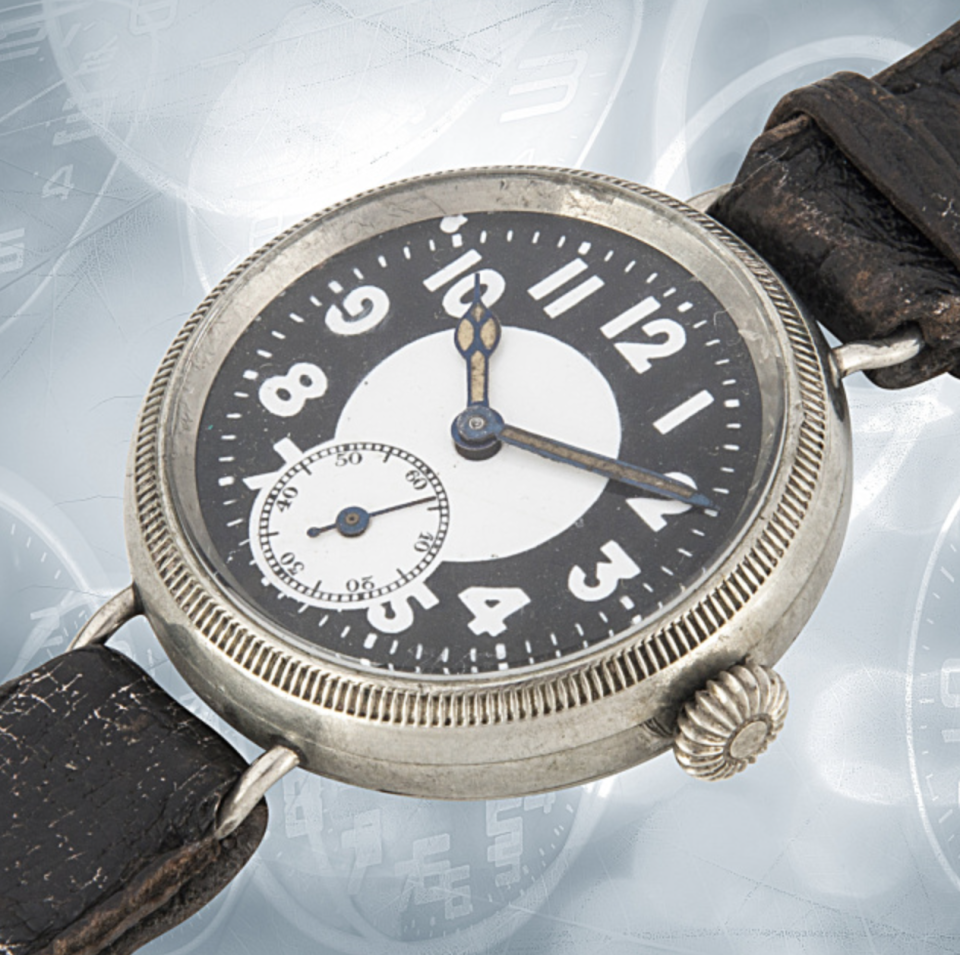
Though not strictly a military development, consider the impact of military timekeeping on the central seconds hand: Indeed, survey most pocket and trench watches used during the First World War, and you’ll notice that they largely feature subsidiary seconds displays. Certain of them, however, are outfitted with center seconds, which makes timing—whether for calculating ground speed, pulse taking, or any other task common in the military—much easier. Fast forward to the Second World War, and a surprising number of diminutive field watches still used sub-seconds. By the time dedicated mil-spec timepieces were being produced in the 1960s, however, sub-seconds were largely relegated to chronograph use.
It’s worth noting that locating a seconds hand at the center of a watch requires the addition of a wheel to the gear train as well as a third concentric rotating arbor, such that what seems so common today was considered then a rather extravagant mechanical adaptation.
24-Hour Track
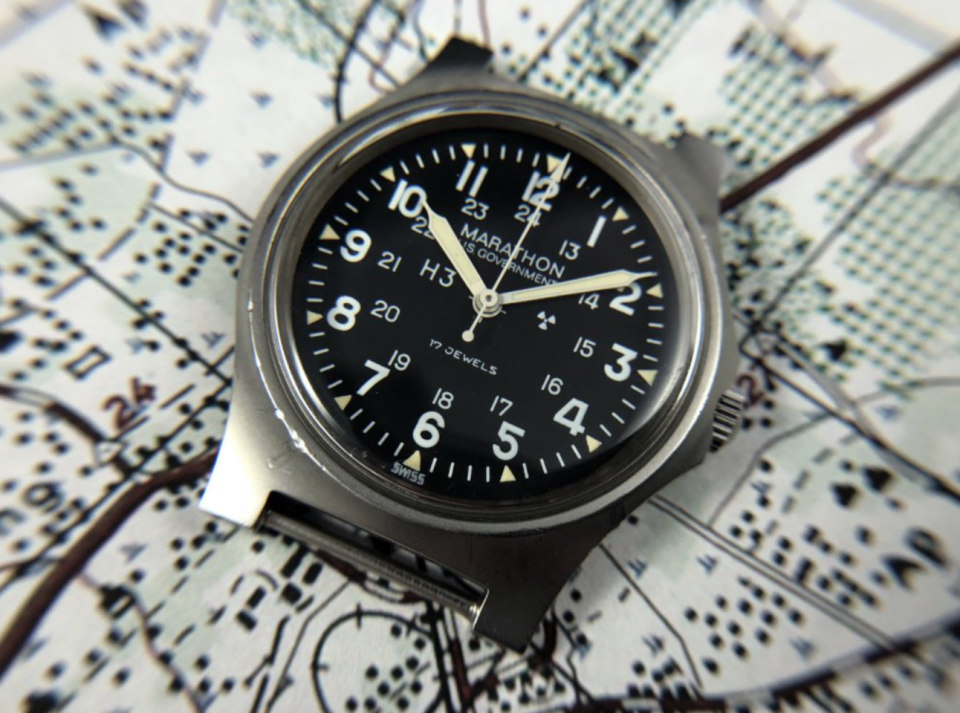
In the military, 24-hour time—or “military time”—ensures accuracy and prevents confusion. Thus, it’s little surprise that 24-hour scales began appearing on military watches as early as the First World War. At that time, a batch of Zenith wristwatches issued to the Army Signal Corps of the American Expeditionary Forces in 1917 features a rather prominent 24-hour ring beneath the luminous, outer Arabic 12-hour track. In later conflicts, from the Second World War to the Vietnam War and beyond, 24-hour tracks became more common—though they’re not nearly as widespread as one might assume within the broader category of issued timepieces. Today, 24-hour tracks can still be seen on many field and pilot’s watches for the civilian market, even if their owners are used to figuring in AM verses PM.
Telemeter Scale
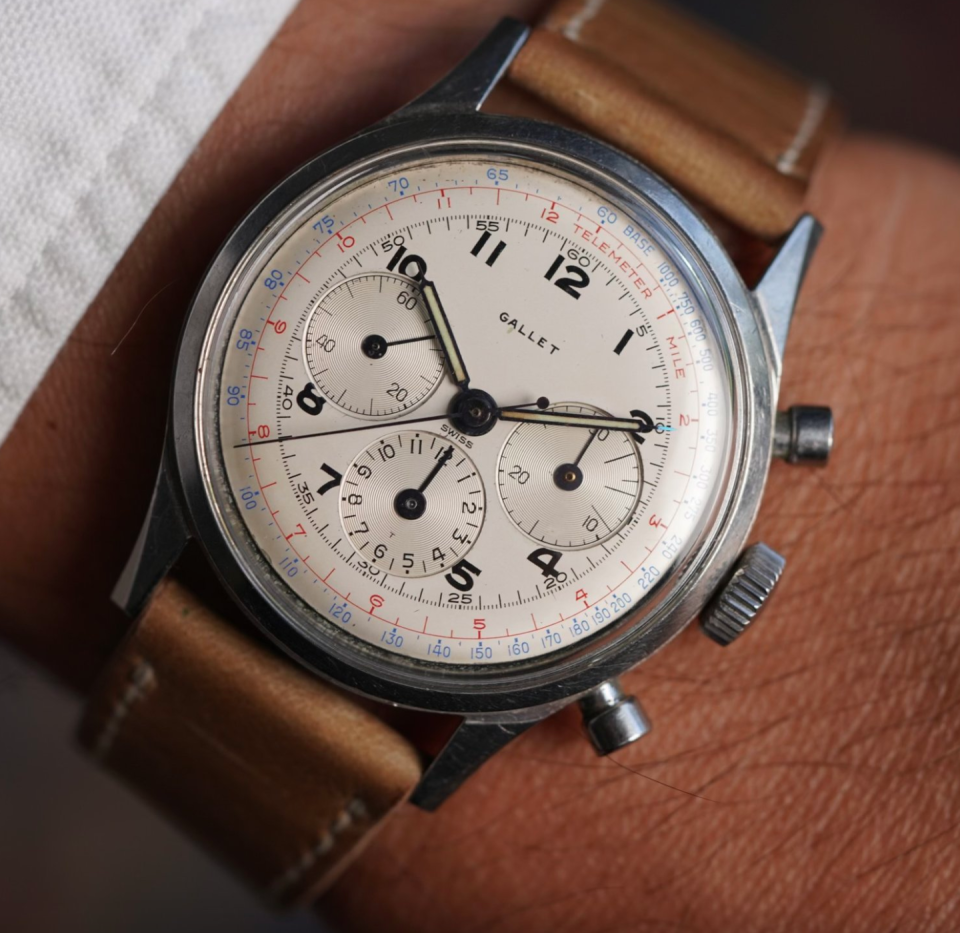
The telemeter, still found on vintage-inspired chronographs, is a type of printed scale that allows the user to calculate the distance between themselves and a moving object. (This scale is generally calibrated for the speed of sound at sea level, which is ~340 miles per second.) For example, an officer viewing an artillery barrage during the First World War would start his chronograph when he sees the muzzle flash, and stop it when he hears the gun’s report. The elapsed seconds hand would point to a corresponding value on the scale calibrated in kilometers or miles—this value would represent the gun’s distance to the observer. Military-issued chronographs from the past century or so with this type of scale are relatively rare, but examples meant for civilian markets can safely be assumed to have been purchased by private soldiers and used during both World Wars.
12-Hour Bezel

While rotating bezels can be found on military-issued as well as civilian wristwatches dating to the 1930s, the 12-hour bezel—which features indices 1 through 12—doesn’t appear to feature on a military-issued wristwatch until the 1950s. The Type 20 and Type 21 chronographs, which were issued to French forces, made use of this wildly practical system, most probably as a type of crude countdown device. As the 20th century wore on, the 12-hour bezel would feature on more and more chronographs, but was still fairly uncommon outside mil-spec pieces until recently. These days, it’s found on all sorts of field watches and chronographs, and is mostly used to track a second time zone when a GMT function is unavailable.
Luminous Dial
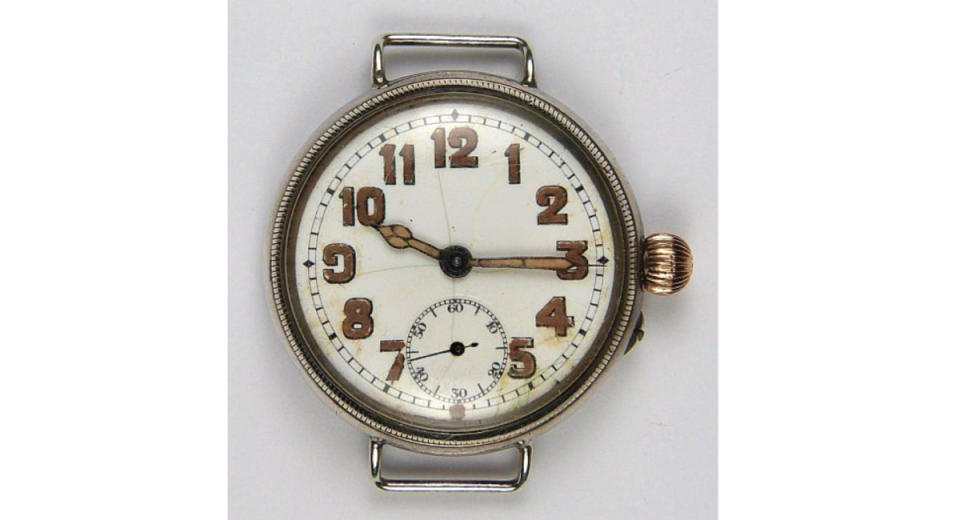
In the leadup to the First World War, pocket watch dials were elegant, enamel affairs with painted indices. However, the need for nighttime and low-light illumination in the trenches caused watch companies to begin painting their dials with radium, the dangers of which were then unknown. Radium continued to be used on military watches through the mid-20th century, and was finally phased out in favor of less dangerous tritium. Tritium itself was replaced with LumiNova, then Super-LumiNova (among other proprietary materials) around the turn of the 21st century.
Hacking
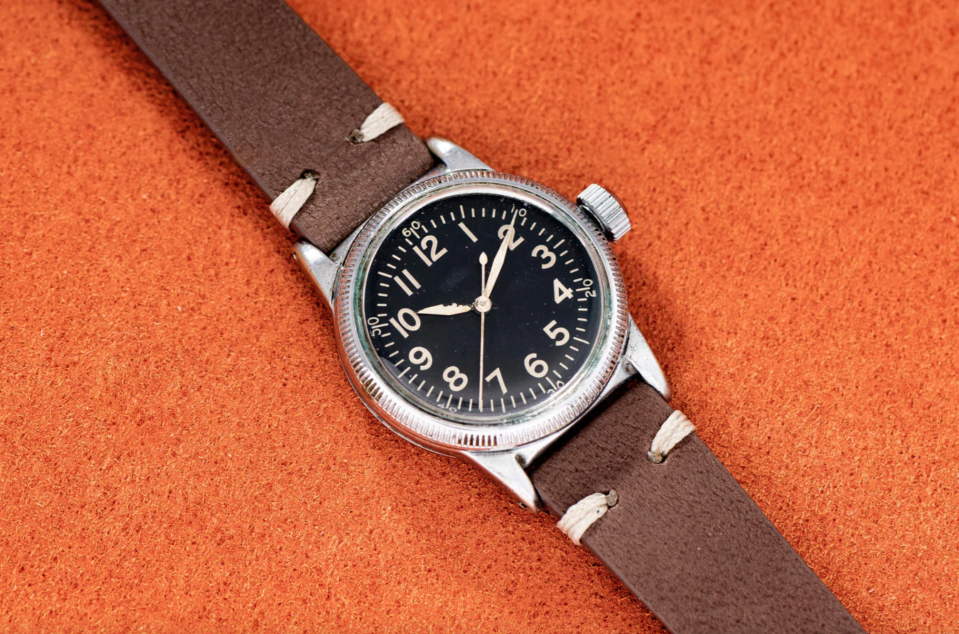
“Hacking” describes the processes of temporarily arresting the movement of a watch movement via the crown such that it can be precisely synchronized with a reference time source, or so that a group of watches—say, on the wrists of an assault team—can be synchronized together. (This is accomplished within the movement by a brake that stops the balance wheel from turning while the crown is fully pulled out.) This feature, which still isn’t found on all wristwatches, was popularized during the Second World War, when the need for precise timekeeping was paramount. Today, most high-grade watch movements “hack.”
Dive Bezel

The Rolex Zerograph, which was produced in incredibly small numbers in the late 1930s, features a rotating timing bezel and predates the Second World War. However, it wasn’t designed as a dive watch, but rather as an early Rolex chronograph wristwatch. During the War itself, several dedicated dive watches were developed for special units, but these largely featured fixed bezels. In the early 1950s, several companies—Rolex, Blancpain, and Zodiac come to mind—released some of the first “modern” dive watches. Whilst spinning up the French navy’s first frogman unit, Captain Bob Maloubier and Lieutenant Claude Riffaud joined with Blancpain to design the Fifty-Fathoms, which featured a rotating dive bezel for calculating elapsed and decompression times. Though there’s much debate as to who conceptualized and patented their dive watch first, there’s no doubt that the need for such a bezel for the French navy impacted the design of one of the world’s most important timepieces.
Fixed Strap Bars

While the great majority of modern watches feature spring-loaded strap bars that are easily removable, certain mil-spec watch designs specified fixed bars, which were welded to the case lugs or formed from a one-piece design like those of First World War trench watches. Why would a government specify this? Spring bars—especially older types from the mid-20th century—were thinner, weaker, and prone to breakage. Specifying fixed bars and forcing the wearer to use a pass-through nylon strap would ensure that barring catastrophic failure, the watch would remain safely secured to a soldier’s wrist. (The legendary Rolex “Mil-Sub” of the 1970s featured fixed spring bars, as do certain CWC models.)
Oversized Hands
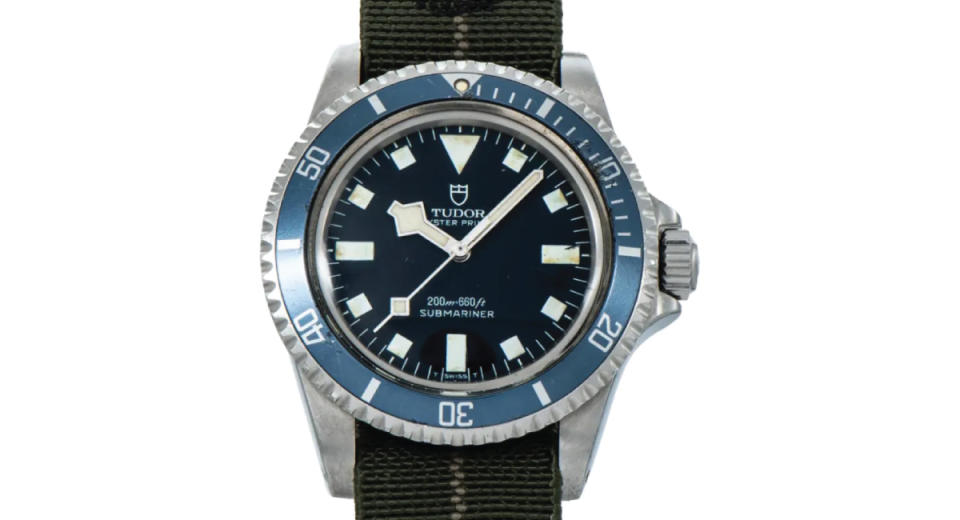
Certain mil-spec watches feature oversized or specially designed hands for visibility underwater or in the air. These handsets—the Tudor “snowflake” of Marine Nationale-issued Submariners ref. 9401/0 and 7016/0, for example—have sometimes trickled down to civilian watches, or even influenced a company’s entire modern production. “Sword” hands, with their oversized, blade-like surface area that can easily be covered in luminescent paint, figure highly in mil-spec pilot’s watch design from the mid-20th century onward, and are still widely used today.
Sandwich Dial
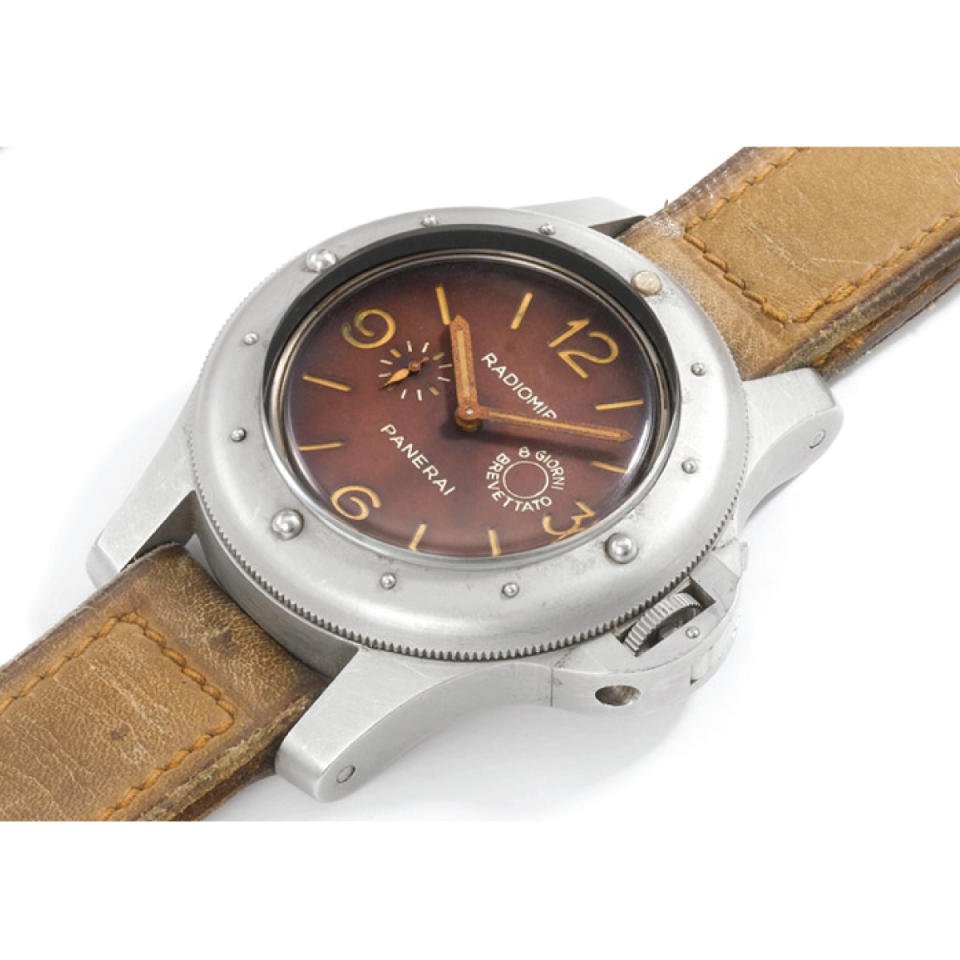
Found on Panerai watches (featuring Rolex movements) as early as the 1930s, the sandwich dial describes one in which a lower plate covered in luminous material is overlaid with another featuring cutouts for the dial indices. The high luminosity of this system, fitted in early Panerai Radiomir models, was such that it became necessary for combat swimmers to cover their watch dials to avoid detection by enemy sailors. Though Panerai developed this unique dial type, other modern brands have come to use similar systems—though mostly for aesthetic purposes.
Onion Crowns
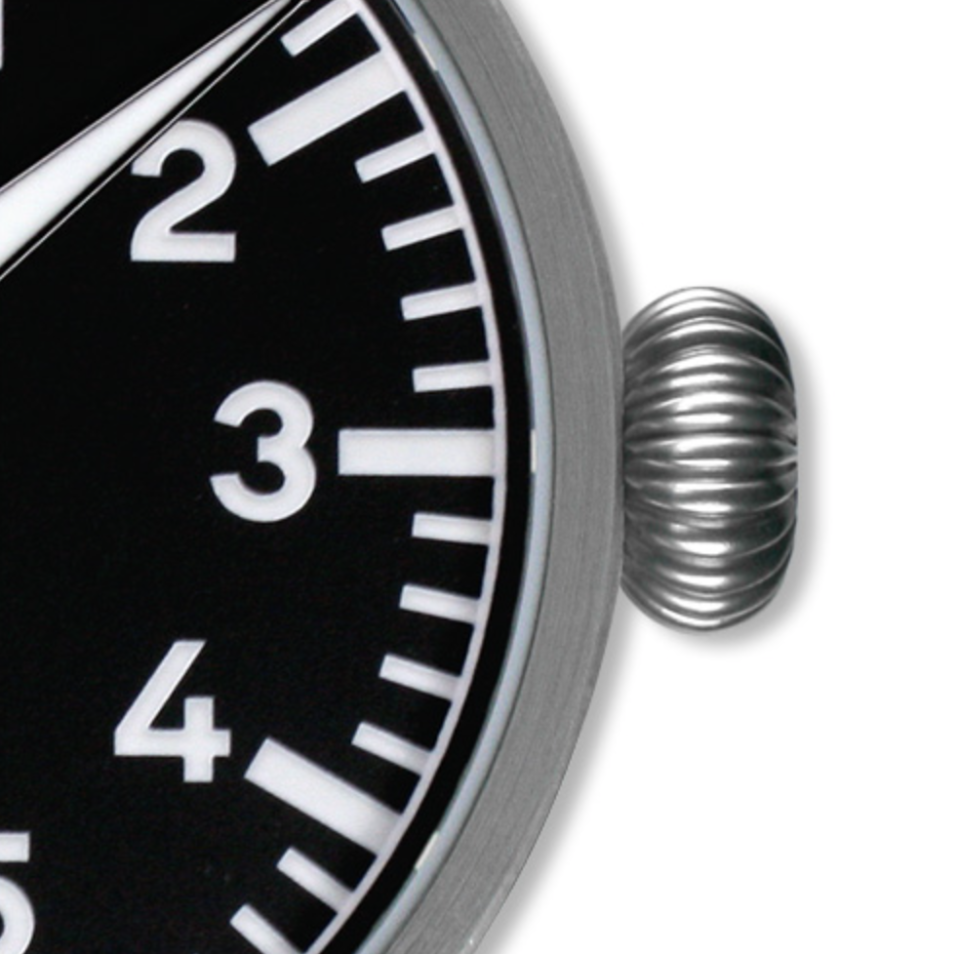
The onion crown featured on pocket watches long before the advent of the wristwatch. However, conversions from pocket watches to wristwatches during the First World War resulted in pieces that carried over this unique feature into the military timepiece. As dedicated military wristwatch production picked up speed, certain companies produced models—especially pilot’s watches—that retained the onion crown-shaped crown, supposedly for better purchase with gloved hands. Today, this crown type remains part and parcel of aviation watch design language, and can be found on countless models from IWC, Zenith, and myriad other brands—especially those with German and Swiss origins.
Best of Robb Report
Sign up for Robb Report's Newsletter. For the latest news, follow us on Facebook, Twitter, and Instagram.


